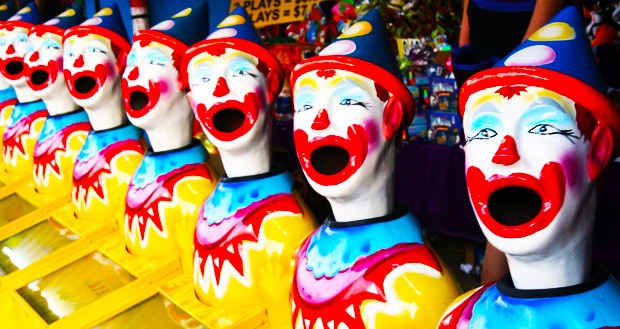Unpacked: the creepy clown phenomenon
 Donato Totaro: “Social media is ripe for new urban myths.”
Donato Totaro: “Social media is ripe for new urban myths.”
Over the last few months a disturbing phenomenon has emerged. More and more creepy clowns have been spotted in neighbourhoods across North America attempting to scare members of the public.
The string of bizarre sightings began in Greenville County, South Carolina, where reports surfaced this August of clowns trying to lure children into the woods.
Since then, similarly suspect clowns have been spotted across the United States, Canada (including Quebec) and overseas, resulting in multiple arrests.
All of which prompts the question: what is behind this creepy clown infestation?
According to Donato Totaro, horror expert and part-time faculty member at the Mel Hoppenheim School of Cinema, the internet might be to blame.
“Just think about Slenderman, Blair Witch Project, Five Nights at Freddy’s … social media is ripe for creating new urban myths to spook us,” he says.
Why clowns? According to Totaro, it’s hard to imagine something more terrifying.
“Popular culture has tapped into this very Freudian fear — essentially a lot of what we’re afraid of stems from childhood, especially things that have been repressed, hidden or set aside by our reasoning mind,” he explains.
“But these dormant fears can be recalled by things that remind us of them. Call it the ‘return of the repressed’. There is a host of these elements, from toys to games to traditions, and the clown is definitely one of them.”
Without a doubt, red noses and oversized shoes have held a special place in the horror genre for decades, from Poltergeist to Killer Klowns from Outer Space. However, as sinister as these sightings might appear, Totaro points to a more innocuous underlying motivation.
“What's behind it? Maybe a desire to get in contact with people again? A way to make an emotional link, even if fleeting or intrusive.”
Either way, some companies such as Canadian Tire and Target are not clowning around when it comes to these incidents, pulling related costumes and decorations from their stores. Unfortunately, it’s unlikely that such moves will do anything to combat the clown pandemic, says Totaro.
“They don't want controversy. But it doesn't make sense — clown costumes can be bought many places.”
But even if you’re able to find one, will you be allowed to wear it? L'École secondaire des Chutes in Shawinigan has banned clown costumes after a group of students wearing the offending attire pranked their peers in a parking lot.
A quick Google search shows the goofy get-ups are being banned at schools and Halloween events all over the place.
And so, as Halloween draws ever near, we’re left wondering: are more creepy clowns waiting in the wings, or will they banished to the shadowy corners of our imaginations?
Find out more about Concordia’s Mel Hoppenheim School of Cinema.


